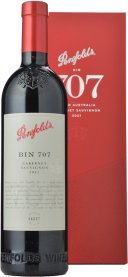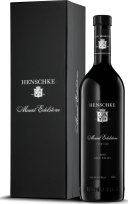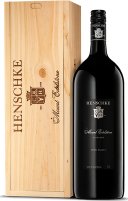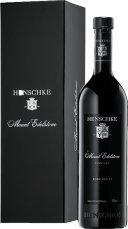$100 and over
Penfolds Bin 704 Napa Valley Cabernet Sauvignon
Steeped in Penfolds winemaking tradition yet still embracing modernity, Bin 704 seeks to redefine Napa Valley cabernet through a Penfolds lens. Being mindful of varietal nuances, regional essence and silk-like textural definition, the wine is nurtured in French barriques for maturation. Impressive is the cyclical nature of viticulture and winemaking, and Penfolds recognises that different hemispheres often end up being the mirror image of the other. The name Bin 704 draws inspiration from the “mirror” or “reverse” image of its Australian Bin 407 stablemate, a wine which also respects varietal expression.
Pooley Cooinda Vale Oronsay Pinot Noir
POOLEY Cooinda Vale Oronsay Pinot Noir, Coal River Valley, Tasmania
Henschke Tappa Pass Shiraz
Henschke have in recent years begun to identify and single out great quality parcels of Shiraz fruit that deserves to be bottled seperately and released as part of their Vineyard Selection. The Tappa Pass Shiraz is sourced from old low yielding Barossa vineyards that shows amazing depth and concentration. Rich, lush and intense it will develop further complexity with bottle age.
Penfolds Bin 707
Bin 707 is a Cabernet Sauvignon reflection of Grange, intensely-flavoured fruit, completion of fermentation and maturation in new oak, expressing a Penfolds understanding of multi-vineyard, multi-region fruit sourcing. Bin 707 was first vintaged in 1964. The wine was not made from 1970 to 1975 when fruit was directed to other wines, nor in 1981, 1995, 2000, 2003 or 2011 (when fruit of the required style and quality was not available). Full bodied and with proven cellaring potential, Bin 707 retains a secure place among the ranks of Australias finest Cabernets.
Wendouree Shiraz
Wendouree has achieved cult status with its tiny production from ancient vines. Luscious dark berry Shiraz fruits and some meaty characters run through the full-bodied palate with ripe tannins.
Shaw & Smith Lenswood Vineyard Pinot Noir
Bodega Catena Zapata Adrianna Vineyard River Malbec
Nicolás Catena Zapata planted the Adrianna vineyard in Gualtallary with a single goal in mind: to find the coolest location for growing vines in Mendoza. Originally, viticulturists feared that Bordeaux varieties such as Malbec and Cabernet Sauvignon would not ripen in Adrianna. In terms of the Winkler classification, a method developed in California to add degrees and categorize regions according to their climate, the weather at Adrianna is between zone 1 and zone 2 depending on the year, putting it between Burgundy and a very cool part of Bordeaux. Even so, no French woman would dare to plant Cabernet Sauvignon or Malbec in Burgundy. Yet that is exactly what the Catenas did in the high-altitude soils of Adrianna. Nicolás planted the Adrianna Vineyard with Cabernet Sauvignon and Chardonnay cuttings from France, and with Malbec taken from Lot 18 of his 75-year-old Angélica vineyard. Over the next few years the wines consistently proved to have more minerality and more acidity than wines from other sites in the Southern Uco Valley at lower altitudes—sites such as Altamira, La Consulta and Eugenio Bustos. The Adrianna Malbecs have more grip and denser tannins. Fortuna Terrae means luck of the land in Latin, and indeed, then vines from this parcel of the Adrianna Vineyard are lucky. The deep loamy soils are home to many varieties of native grasses which prevent erosion and attract beneficial insects, singing birds and mountain foxes. Because of the freshness imparted by the deep soils and high altitude, the wines of Fortuna Terrae have optimal acidity and delicate flower aromas. It is best to enjoy this wine a few years or decades after harvest. This cuvée takes its name from a small parcel of the Adrianna Vineyard that is completely covered with oval white stones and was the site of an ancient riverbed. The abundant stones provide optimal drainage and extreme temperatures. They absorb heat and moderate the nights, but also function like ice cubes after a very cold night. Stony soil Malbecs tend to be extremely aromatic, rich and luxurious, just like the River Malbec from Adrianna. This wine can be enjoyed young or aged for decades.
Fratelli Revello Barolo Conca
The Revello family’s history began in the first post-war period, when they became tenants of a farmhouse in the parish of San Martino di La Morra. In the 1960s, they began to replant vineyards, which later produced the first bottle of Barolo by Giovanni Revello & Figli. This marked a period of expansion for Revello with their acquisition of the Gattera and Conca sites. In the 1990s, brothers Carlo and Lorenzo (Enzo) Revello decided to divide the company to facilitate the inception of their respective children. Enzo Revello later established the Fratelli Revello winery in Annunziata, where he and his children Simone and Elena now make wines together. Since releasing their first Fratelli Revello Barolo in 1993, a blend of fruit from all their vineyards, four single cru-inspired wines appeared and defined Revello’s identity as a brand capable of producing single-site wine of inimitable quality. Today, the Fratelli Revello wines benefit from the utmost level of care and selection process in the vineyards. The resulting organic wines display an undeniable approachability and fruit generosity unspoiled thanks to a gentle touch in the cellar. Conca can be described as one of the smallest MGA crus in La Morra. It almost entirely serves as Revello’s home block. The name ‘Conca’ is derived from its concave shape, which has for effect to trap heat and coddle the vines, conferring the wines a bolder structure and fleshiness than those made from vines situated higher up. This vineyard is claimed by 5 producers, Revello being not only the largest landholder, but also the most committed to preserving its natural ecosystem. The vines were planted in 1954 on calcareous and clayey soil. The 0.7-hectare vineyard faces south-east at 250 meters above sea level. The grapes were hand harvested and transferred into horizontal roto-fermenters where they remained for 6 to 8 days on skins. The wine was fermented in stainless steel tanks for 10 to 15 days. Malolactic conversion happened in barriques. It was aged in used French barriques 60% and new 40% for 24 months. One of the smallest vineyard extensions in all of Barolo, Conca is the tiny plot in front of the Revello estate. Dripping with personality, Conca’s geography lends itself towards structured wines that are atypical to La Morra, with characters of chocolate, spice, tar and smoke and a serious tannin profile.
Fratelli Revello Barolo Gattera
The Revello family’s history began in the first post-war period, when they became tenants of a farmhouse in the parish of San Martino di La Morra. In the 1960s, they began to replant vineyards, which later produced the first bottle of Barolo by Giovanni Revello & Figli. This marked a period of expansion for Revello with their acquisition of the Gattera and Conca sites. In the 1990s, brothers Carlo and Lorenzo (Enzo) Revello decided to divide the company to facilitate the inception of their respective children. Enzo Revello later established the Fratelli Revello winery in Annunziata, where he and his children Simone and Elena now make wines together. Since releasing their first Fratelli Revello Barolo in 1993, a blend of fruit from all their vineyards, four single cru-inspired wines appeared and defined Revello’s identity as a brand capable of producing single-site wine of inimitable quality. Today, the Fratelli Revello wines benefit from the utmost level of care and selection process in the vineyards. The resulting organic wines display an undeniable approachability and fruit generosity unspoiled thanks to a gentle touch in the cellar. Due to Gattera’s substantial surface area (over 30 hectares), its altitude (240-250 meters) and exposure vary significantly. Revello’s portion of Gattera is at its western-most part, where the vineyard faces southeast, not too far from the homestead and Conca vineyard. This is the coolest site with two distinct parts, one facing southeast, the other, historically known as Turna Langa, facing south. This is a rather feminine rendition of Barolo offering balance, elegance, and delicate spice. The vines were planted between 1960 and 1995 on calcareous and clayey soil. The single hectare vineyard faces south-east at 250 meters above sea level, and south-west at 240 meters above sea level. The grapes were hand harvested and transferred into horizontal roto-fermenters where they remained for 7 to 8 days on skins. It was fermented in stainless steel tanks for 10 to 15 days. Malolactic conversion also happened in stainless steel. It was aged in large Slavonian oak barrels for 24 months. A beautiful and iconic vineyard in La Morra, Gattera is known as much for its iconic Lebanese Cedar that dominates the hillside as it is for producing wines of litheness and elegance. Revello’s Gattera displays wonderful balance every vintage, and walks the line between fruitiness and spice with sweet tannins and fresh acid.
Henschke Mount Edelstone Shiraz
Henschke Mount Edelstone is one of the most important single vineyard sites in Australia. The 90 year old vines has been producing a single vineyard Shiraz since 1952 and is one of Australia's truly great wines. The nose has sweet ripe plum and blueberry aromas and the palate is intense and deeply flavoured. While enjoyable upon release, this is a wine that will enjoy a decade or more in the cellar.



























































